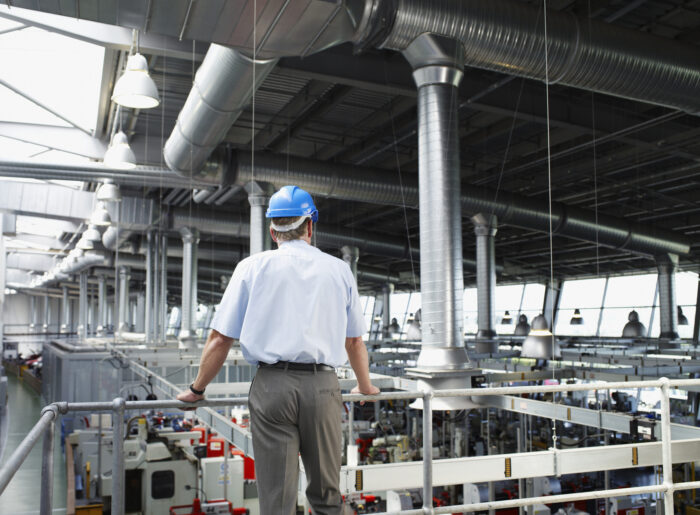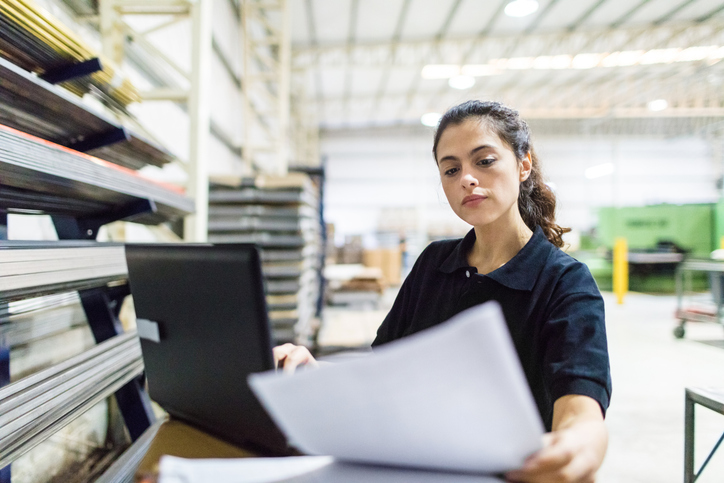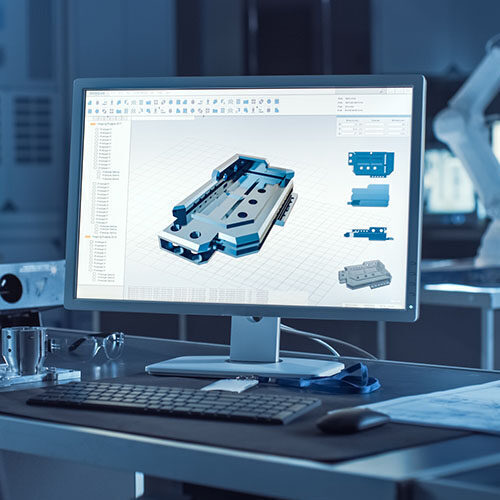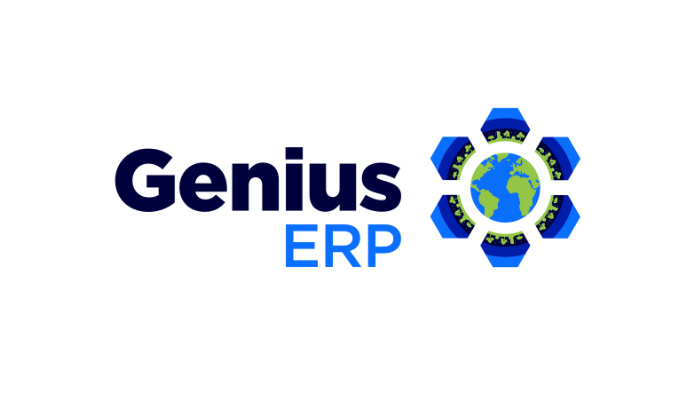
Coronavirus poses major health and safety risks — especially to those working indoors and in confined spaces. Many businesses, including manufacturers have had to change the way they run their shops to comply with health, safety, and sanitation regulations to keep their workers healthy and to keep their businesses running as smoothly as possible.
As COVID-19 cases decline in some geographic areas, but surge in others, it shows the importance of continuing to keep physical distancing and other health and safety measures in place to prevent the spread of the novel coronavirus.
Manufacturers need to ensure the safety of their workforce and businesses by having a “worker-first” mindset that places the needs of their staff first and foremost. Physical distancing measures, increased sanitation, and changes in shop-floor scheduling all need to be put in place to reduce the spread of the coronavirus.
What Risks are Posed by Covid-19
COVID-19 spreads from person to person, most commonly through respiratory droplets (like those created by coughing, sneezing, laughing, or talking) during close interactions, especially within a distance of 2 metres (6 feet). It’s important to note that COVID-19 can be spread by infected individuals who have mild symptoms, or who have not yet or who may never develop symptoms, meaning everyone needs to follow guidelines, even those not experiencing symptoms.
COVID-19 can also be spread by touching something with the virus on it, and then touching your mouth, nose or eyes before washing your hands.
The risk level to your business will be affected by the level of COVID-19 activity in your local community. If there is known community transmission in your area, the likelihood that it could be introduced into your workplace/business is higher. Monitor your community to know your local situation — but remember, you must keep up precautions even if community transmission levels are low, to ensure that you curb the spread of the virus.
The Unique Challenge Faced by Manufacturers
Manufacturers face unique challenges as most of their workers cannot perform their job functions off-site, meaning working from home is not an option for the majority of employees. In many places, manufacturers have been deemed essential businesses, and remain open whether or not the surrounding community is under a lockdown order.
These factors can make manufacturers more susceptible to COVID-19. But with proper safety and health measures in place, manufacturers can mitigate the risk to their businesses.
Prioritize Workforce Safety and Flexibility
The number one thing for manufacturers to do is to ensure that they make the health and safety of their workforce their top priority. Communication is key to ensure that your workers know the changes and precautions that you have made — and that they need to follow — to ensure the risk of transmission is low.
Ensure everyone on your staff is aware that they must stay home if they are ill, or have been exposed to the virus, and that they know the guidelines for self-isolation.
Post notices about hygiene requirements (frequent handwashing and respiratory etiquette) and ensure increased access to hand hygiene, including installing hand sanitizer dispensers in easy to see locations.
Local and national governments have issued guidelines for employers to follow regarding sanitionan and physical distancing, and include helpful tips on how to implement them in your shop. For example to enforce physical distancing, use physical cues including accessible signage and floor markings denoting the proper distancing.
Other ways to ensure worker health and safety include:
- Stagger start times, shifts, breaks, and lunch times.
- Restrict the number of people on-site and where they are assigned to work.
- Control site movement (by limiting the potential for workers to gather).
- Limit the number of people working in one space at the same time.
- Minimize the number of people using each piece of equipment in instances where sharing equipment cannot be avoided.
- Sanitize shared equipment (where sharing of equipment cannot be avoided).
- Hold meetings in an outside or large space.
- Install barriers where practical; this can include plexiglass.
- Include handwashing before breaks and at shift changes.
- Provide a safe place for workers to dispose of used sanitizing wipes and personal protective equipment.
- Clean washroom facilities.
- Sanitize commonly touched surfaces or areas such as entrances, counters, washrooms and kitchens.
- Open windows to increase ventilation whenever possible.
Check your local or national government websites to find more detailed information and guidelines on how to create a safe environment for your workers.
Personal Protective Equipment
Personal protective equipment (PPE) including masks, face shields, and gloves, have also been shown to be effective in preventing the spread of the coronavirus. Supply your staff with such equipment to help keep them safe where appropriate.
Always do a safety assessment first to ensure that equipment will not interfere with your employees ability to see or speak clearly, and cannot become accidentally lodged in equipment the wearer is operating. If you have a workplace occupational health and safety (OHS) committee or representative, involve them in the assessment to ensure you are considering all the risks associated with specific tasks and activities.
If PPE is recommended, employees must be trained on the appropriate use of PPE and the sequence for putting it on and taking it off. Employees should also be trained about proper fit and provided with different sizes of PPE to account for anatomical differences (e.g. between women and men). Misuse of PPE can increase the risk of infection for example, through contact with potentially contaminated PPE.
Leverage Your Digital Capabilities and Assets
Developing flexible staffing levels, staggering work shifts, and optimizing crewing schedules, as well as implementing a remote working policy are all ways to help combat the spread of the virus.
Using digital technologies, like your ERP system, will help you to accomplish these tasks. For example, your ERP system makes it easy for your front office — and some other staff — to work from home, as they can access the relevant data and information they need to do their jobs.
ERPs provide manufacturers with the ability to monitor real-time production and operations remotely, helping to ensure production is on track and informing operational, sales, and service teams on order status, shipping, delivery and service updates.
ERPs can also help manufacturers schedule their shops to precision — helping manufacturers to keep up operational efficiencies, while complying with physical distancing measures. Using the scheduling functions in your ERP can help you to create the most efficient schedule possible that will allow you to keep production on track, while staggering team work schedules and helping to enforce physical distancing.
In places where shops are not allowed to operate at full capacity, an integrated scheduling system can help you to know which employees should be on-site, and when, to keep jobs moving through your shop.
Anticipate and Forecast Demand Disruptions
In reality, because of COVID-19 and the continued economic implications of the virus, your business is not running at the consistent level it was before the virus. An ERP system can help you analyze your data for trends and help you to accommodate for production ramp-ups or slowdowns — whether in how to best staff your shop, or in how to manage your inventory.
Looking to other markets who experienced the crisis earlier on, and are now beginning to emerge into a new normal can also help to guide your decision-making. Communicating with your buyers and customers is also important — to understand and gauge their economic health — will also help you to anticipate future production levels.
Accept that productivity will take a hit in the short term, but that the long term health of your business and employees depends on your willingness to make sacrifices now. Flexible staffing levels, modified schedules, and new safety and sanitation practices are needed to combat the spread of the virus and keep your workforce — and by extension your community — safe and healthy.
Get your eBook Scared to implement a new ERP?
"*" indicates required fields



